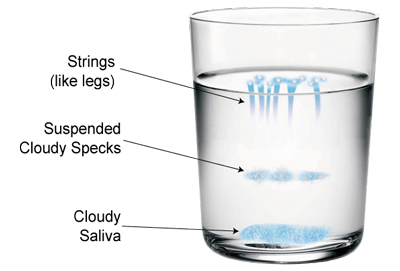Candidosis
Some physicians take up for several years the question of Candida albicans systemic infection may cause fibromyalgia syndrome. The Candida albicans is an opportunistic pathogenic yeast type fungus and it is a normal part of human gut flora, a group of microorganisms that live in our digestive tract. Most people have some level of Candida albicans in their intestines, and usually it coexists peacefully with the other bacteria and yeasts that live there. But a combination of factors can lead to the Candida albicans population getting out of control, establishing fast growing colonies and biofilms, and starting to dominate our gut. In fact Candida albicans invasion may cause emerging and development of several symptoms that may imitate fibromyalgia symptoms.
Several fungi (like e.g. Candida, Aspergillus, Cryptococcus, etc.) are widespread in the nature (water, soil, and home) and are not hazardous for healthy people. However, these fungi may cause serious illnesses in certain clinical circumstances. Weak immune system† may primarily promote development of these illnesses. Therefore we recommend in situation of impaired immune function and fungus infection → Immulina plus – natural and efficient preparation that may support fast restoration of immune function.
Diagnosis of Candida infection (candidosis) might be difficult. The most important in the diagnosis of infection have medical investigation (history) and medical examination (physical examination). The thorough medical examination may help to establish the cause of fungal infection, primary source and its duration. I might be necessary to perform number of lab tests including collection of different bio-samples for mycological examination (microscopic examination and specimen cultures in order to determine type of fungi and their susceptibility to drugs). The critical value has fungus isolation from patient’s blood. Physician basing on history and physical examination determines type and spectrum of tests. The saliva test could be helpful in the initial diagnosis of candidosis. The principles of this test has been presented in the next column.
- Frequent/recurrent respiratory tract infections
- Predisposition to other infections
- General weakness and fatigue
Serious weakness of the immune system (congenital and acquired) are called immune deficiencies and require specialised action of clinical immunologist. Immune system one can read about in our service → immunity.online.
Symptoms of Candida albicans Infection
Nearly every second person is Candida albicans carrier. This fungi – belonging to yeast type – do not give any symptoms in normal conditions. However, in decreased immune function, it may become threatening invader and foster disease in host organism. The symptoms depend on invaded place localization. The initial symptoms may comprise of: The initial symptoms may comprise of: digestion problems, gases, bloating, general exhaustion, weakness, tiredness, sleep disorder, increased sweating, mood fluctuation, reluctance to any form of activity, frequent common cold, irritability, and various inflammations. Hereinafter we have listed general symptoms that could be fund in case of systemic candidosis. However, symptoms are in random order and not according how frequent they appear:
|
|
*In the fibromyalgia course some diseases or problems occur much more frequently than they occur in the general population. This has been presented in the → figure. The prevalence of the various disorders that occur among fibromyalgia population (expressed in percentage) is presented inside internal oval and the prevalence (in percentage) of the same disorders in the general population is shown outside this oval.
You maybe would like to also see: → vulvodynia and → yeast vaginosis.






